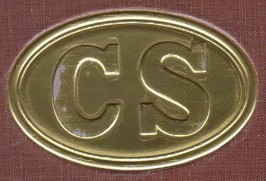

|
European-made revolvers
|
THE KERR REVOLVERS (Pronounce "Carr")
The British arms factory "London Armoury Company" was founded on February 9, 1856. Among the most important stockholders are the names of Robert Adams (inventor of the Adams revolver) and James Kerr. The factory was established on the formal site of the South-Eastern Railway Company, in the Bermondsey borhood, City of London.
The factory flourished due to the manufacture under license of the Adams revolver. Yet in 1859, a decision of the board to increase the production of infantry rifles and decrease that of revolvers, could not be accepted by Robert Adams, who left the company and sold his stock. By then, James Kerr became the prominent figure of the company.
Production was enhanced by the mass production of the Enfield model 1853 rifle, for which the factory had secured important contracts with the British Government as well as with private clients.
The company didn't however loose its interests on revolvers, and James Kerr applied even for several additional patents on the field. In 1859, the company started the production of a new kind of revolver, known under the name Kerr Patent Revolver.
However the LAC did not secure any contract with the British government for that revolver, modest sales to retail dealers and volunteer units were realized. In November, 1861, the United States Government purchased 16 revolvers, and that will be the only official purchase by the Union army.
As soon as he arrived at London at the beginning of the Civil War, Capt. Caleb Huse, in charge of the purchase of handguns for the Confederate Government, went immediately to the LAC and offered Kerr a contract for the delivery of all rifles and revolvers he could produce. After a few problems with Union agents, also present at London, and the cancel of a pending contract with the British government, Huse managed to secure a contract with the LAC, in which was stipulated that the latter would turn over to Huse, on behalf of the Confederacy, all the arms that would be produced.
That contract made the London Armoury become an effective Confederate Armoury in England.
According to surviving records, about 80,000 rifles and 9,000 revolvers were sold to Huse. More than 70,000 rifles and about 7,000 revolvers were produced and shipped, but the exact number of weapons that made it through the Union blockade and was delivered to the Confederate army is unknown. The London Armoury, anyway, delivered more revolvers to the Confederate army than any other manufacturer.
Captain James D Bulloch of the Confederate Navy also signed a contract with the LAC for the delivery of revolvers; the exact terms of that contract are however unknown.
The weapons delivered by the LAC were considered the best of all arms delivered to the Confederacy. This was confirmed by both Huse and Bulloch, and also by a letter from the Tennessee army, dated April 1863, ordering 200 revolvers and insisting on the fact that the Kerr pattern was preferable to the Spiller & Burr.
the fate of the London Armoury Company was so intertwined with that of the Confederacy, that the company ceased to exist within a year following the fall of the Confederacy.
THE REVOLVERS
The Kerr revolver is totally different from the other revolvers of its era. It has a sidehammer and a "backward" lockplate similar to that of numerous percussion rifles.
Its lock mechanism is extremely simple, and can be repaired on field by any gunmaker, without the need of specific spare parts.
The cylinder axis enters from the rear, so it has just to be pulled rearwards to allow the cylinder to fall out.
That revolver was produced in both .44 and .36 calibres, and both single and double action, with a five-chambers cylinder. Only the single action .44 calibre was sold to the Confederacy.
Most markings on these revolvers are engraved, not stamped. On May of them, the letters JS and an anchor can be seen on the forepart of the grip frame. Those letters have nothing common with the Confederate army and are believed to be the initials of John Smiles, who was a stockmaker at London.
Serial numbers of the revolvers delivered to the Confederate army situate between 3000 and 10000.
Well, about the Kerr, one could still say that this revolver was the biggest English competitor to the Le Mat, just as the Lefaucheux 1854 was its biggest French competitor.
Major Caleb Huse's main argument for refusing the Le Mat and favoring the Kerr was the price ($35 CSA for a Le Mat against $5 CSA for a Kerr); but it is clear that Caleb Huse, supported by both General Gorgas and James Kerr ($$$$) used a lot of subterfuge and surreptitious maneuvers to delay the contracts by at least 6 months.
But that's politics, isn't it...
Marcel